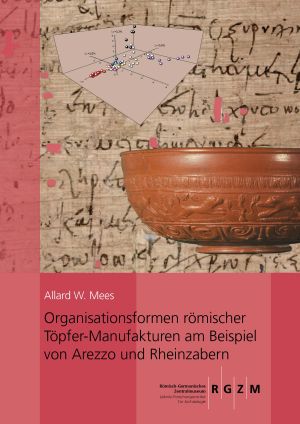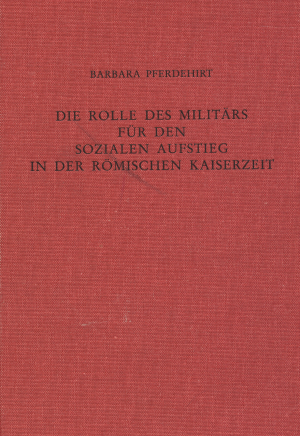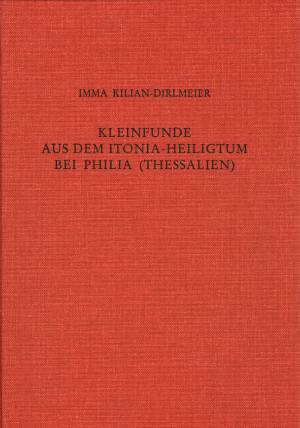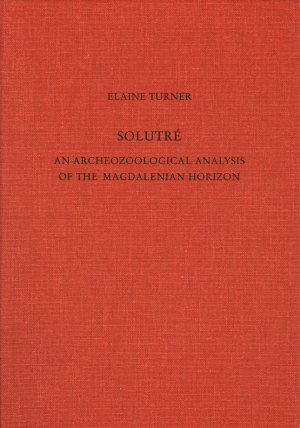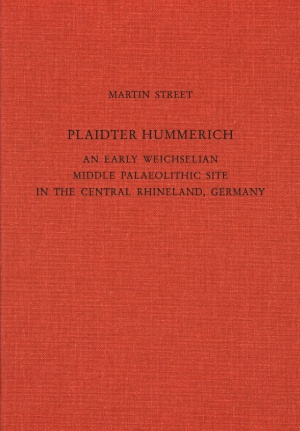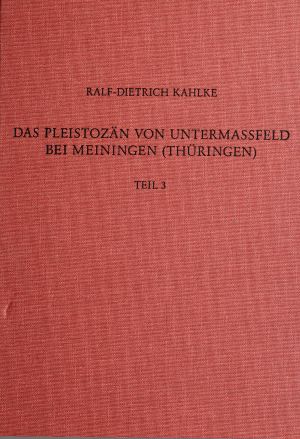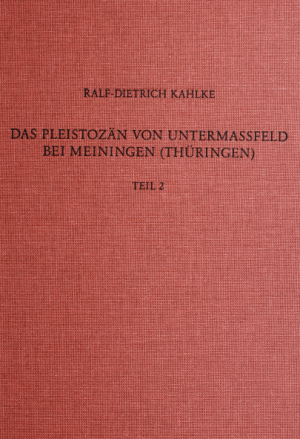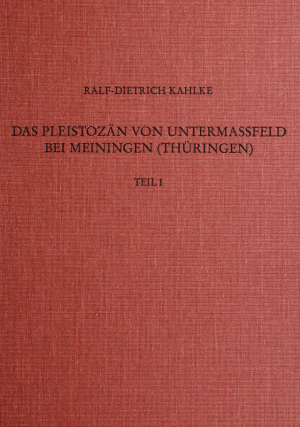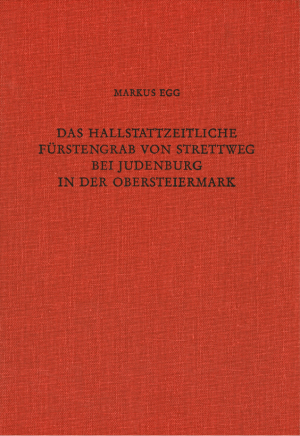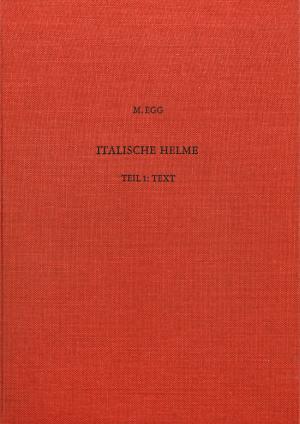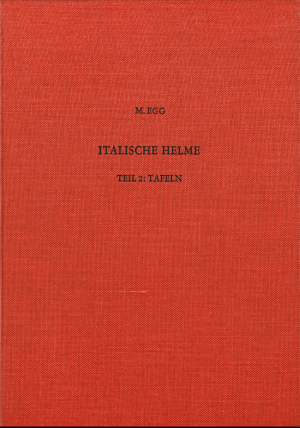Monographien des RGZM
In the Monograph series of the Romano-Germanic Central Museum, Leibniz Research Institute for Archaeology (RGZM), comprehensive studies on prehistoric and early medieval archaeology, history, culture and art are published, based on archaeological, historical and written ancient sources. Additional material and Open Data can be included in the online-version.
The digital content is planned to be enlarged by retrodigitalisation of older volumes.
Additional data on publications of this series
Italian translation of the texts from:
Joachim Weidig, Bazzano – ein Gräberfeld bei L’Aquila (Abruzzen). Die Bestattungen des 8.–5. Jahrhunderts v.Chr., Monographien des RGZM, Band 112 (Mainz 2014)
More publications of the Romano-Germanic Central Museum (RGZM)
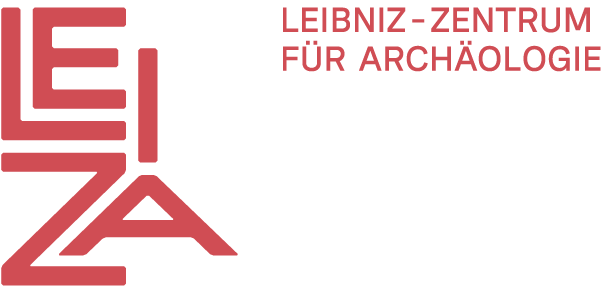
Press
Leibniz-Zentrum für Archäologie
Ludwig-Lindenschmit-Forum 1
D-55116 Mainz
Tel.: +49 6131 8885 0
E-mail: verlag@rgzm.de
Published so far
Organisationsformen römischer Töpfer-Manufakturen am Beispiel von Arezzo und Rheinzabern unter Berücksichtigung von Papyri, Inschriften und Rechtsquellen
Roman Terra Sigillata (Samian) ceramic was made in large manufacturing sites with highly sophisticated technology. The red slip ware was distributed throughout the Roman Empire. However, the complex organisational structures within the kiln sites and the distribution network were until know largely unknown. This book uses a dual approach to unveil the internal social and organisational labor structures from the 1st century BC to the 3rd century AD. Firstly by analysing the figure type combinations of decorated terra sigillata with statistical methods and secondly by comparing the results with the evidence of nearly 40 potters’ contracts documented in Roman Egyptian papyri. Additionally, the discernable working clusters of potters are analysed for their reappearance in distribution patterns and dated by their occurrence on dated sites. The social analysis of the potters’ names involved makes it clear that slaves are not traceable in the Samian industry.
Die Rolle des Militärs für den sozialen Aufstieg in der römischen Kaiserzeit
In order to be able to take on important offices in politics, administration and the military in the Roman Empire, Roman citizenship was indispensable. Peregrine men who enlisted in military service received Roman citizenship for themselves and their children and the right to legally marry a non-Roman woman after their term of service and honourable discharge. This book examines, on the basis of so-called military diplomas, how these privileges changed over time for the various types of troops and what the consequences were for the soldiers' descendants.
Kleinfunde aus dem Itonia-Heilgtum bei Philia (Thessalien)
By epigraphical evidence the sanctuary of the Thessalian Koinon is located near the village Philia, nomos Karditsa (Thessaly). In 1960 deep ploughing in this area teared open the soil until the natural ground, a big quantity of objects was looted by the villagers and part of it reached European and American museums. There were only small places with undsisturbed stratigraphy left, when in 1963-67 D. Theocharis excavated the sanctuary. Therefore it’s mainly the the chronotypological classification of the small finds discussed in this study. Their function – votive, ritual equipment, tool etc. - are also analysed. A diachronical reconstruction of the cult activities refers to the archaeolocical material as well as to the literary tradition.
Solutré: An archeozoological analysis of the Magdalenian horizon
In this monography, the results of an analysis of the fauna from the Magdalenian horizon at Solutré, Burgundy, France are presented. They show that the Magdalenians hunted mainly horses at Solutré, but also that they took relatively high numbers of reindeer and bison. Times of death of horses, reindeer and bison suggest that the site was probably used at varying times of the year and that groups of juvenile reindeer and bison were taken on a seasonal basis. One of the characteristics of the Magdalenian faunal assemblage is the extremely low number of butchery traces and high number of carnivore gnawing marks on the remains of horse, reindeer and bison.
Plaidter Hummerich: an early Weichselian Middle Palaeolithic site in the Central Rhineland Germany
The Plaidter Hummerich Middle Palaeolithic site was located on the summit of the eponymous East Eifel volcano, which today has been almost entirely quarried away. To the east lies the flat landscape of the Neuwied Basin and the Rhine Valley. Excavations from 1983-1986 of the stratified ice age deposits of the crater fill yielded approximately 3,000 individual finds of animal remains and 2,000 finds of lithic materials. The latter give an insight into the technological skills of Neanderthals, the rocks used indicate long-range mobility. The remains of predominantly large herbivores - wild cattle, horses, red deer – provide evidence for the abundant wildlife as an available food base.
Das Pleistozän von Untermassfeld bei Meiningen (Thüringen)
Part 3 of the Untermassfeld monograph contains the processing of the spectacular felid material recovered from the site, which includes jaguar, cheetah, cougar, lynx, dirk- and sabre-toothed cat finds. This richly illustrated volume also contains studies on insectivores, hares and rodents, herbivore-osteophagy, small mammal gnaw marks, and paleotemperature determinations. The volume concludes with an extensive account of the genesis of the fossil deposit as well as the Early Pleistocene paleoecology and biostratigraphy of Untermassfeld. Included in the volume are 15 excavation plans documenting more than two decades of field work. The articles are written in German or English and each has a detailed English summary
Das Pleistozän von Untermassfeld bei Meiningen (Thüringen)
Following on from Part 1, published in 1997, Part 2 of the Untermassfeld monograph presents new results from the international team of specialists coordinated by R.-D. Kahlke. This volume contains the research history of the Early Pleistocene fossil site from 1989 to 1996 as well as investigations on the geological structure of the deposit and the formation of its exceptional accumulation of skeletal remains. Methodologies of osteological preparation and conservation are detailed along with new cervid finds and the remains of a hippopotamus skull. This volume also includes studies on the entire collection of rhinocerotids, equids, elephantids, canids, ursids, mustelids and hyaenids together with corresponding finds of coprolites. The richly illustrated articles are written in German or English and each has a detailed English summary.
Das Pleistozän von Untermassfeld bei Meiningen (Thüringen)
The geology and palaeontology of the extraordinarily rich Early Pleistocene fossil vertebrate site of Untermassfeld has been the focus of an international investigation involving a diverse team of scientists under the coordination of R.-D. Kahlke. Part 1 of the multipart monograph covers the history of the scientific investigation of the fossil deposit and its surroundings as well as articles on the site’s geology and palaeomagnetism, its mollusc fauna, and the recovered remains of fish, amphibians, turtles and birds. The exceedingly rich amount of bovid, cervid, hippo and wild boar finds are also discussed and the volume concludes with the overall excavation findings (geology, paleozoology, taphonomy, paleoecology, and stratigraphy). All of the richly illustrated articles are in German, English or French and each has a detailed English summary.
Das hallstattzeitliche Fürstengrab von Strettweg bei Judenburg in der Obersteiermark
Strettweg in Upper Styria was the site of one of Austria's most important archaeological discoveries in 1851/52. The richly furnished ceremonial tomb from the Iron Age (around 600 BC) contained, among many other objects, the famous "cult chariot" - a unique masterpiece of Hallstatt-period craftsmanship.
The rich metal grave goods include weapons, horse harness and chariot parts, bronze and clay vessels - in other words, classic prestige goods of Hallstatt-period elites. Grave goods from the female costume suggest offerings to the dead. There is evidence of extensive cultural contacts with the Hallstatt cultures north of the Alps, with Upper Italy and with the ancient world.
Italische Helme
Using the example of the Italian helmets, the area of influence of the Etruscans in Picenum, in Upper Italy and in the Alpine region as well as the interactions between the different cultural groups can be traced.
The Etruscans developed the helmet type with a circumferential brim in the 7th century BC; in the course of the 6th century a throat was added to secure the crest. The Negau helmet was typical of the Archaic period. It disappeared in Central Italy in the 4th century, but remained in use in the Alpine region until the 1st century BC. In the Tyrolean region and in eastern Switzerland, the helmets were not found as prestige goods in graves, as was usually the case, but in sacrificial sites, often badly damaged by fire. Similar to Greece, such helmets captured in war were a high-value consecration gift.
Vol. 2, see.
Italische Helme
Using the example of the Italian helmets, the area of influence of the Etruscans in Picenum, in Upper Italy and in the Alpine region as well as the interactions between the different cultural groups can be traced.
The Etruscans developed the helmet type with a circumferential brim in the 7th century BC; in the course of the 6th century a throat was added to secure the crest. The Negau helmet was typical of the Archaic period. It disappeared in Central Italy in the 4th century, but remained in use in the Alpine region until the 1st century BC. In the Tyrolean region and in eastern Switzerland, the helmets were not found as prestige goods in graves, as was usually the case, but in sacrificial sites, often badly damaged by fire. Similar to Greece, such helmets captured in war were a high-value consecration gift.he Italian helmets, the area of influence of the Etruscans in Picenum, in Upper Italy and in the Alpine region as well as the interactions between the different cultural groups can be traced.
Vol. 1, see.



